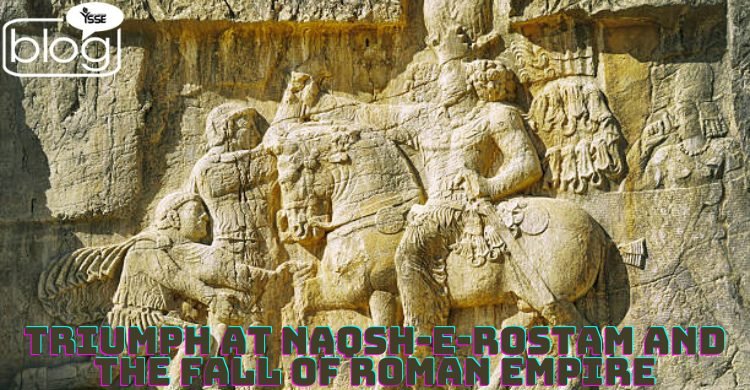Naqsh-e Rustam isn’t just your average ancient site – it’s like the Hollywood of burial grounds, with the tombs of Persian kings giving off major ‘wow‘ vibes from way back in the first millennium BC.
It’s a giant reminder of how Persia used to be the boss of a huge chunk of the old-time world.
You’ll find Naqsh-e Rustam about 5 km away from Persepolis, the ancient capital of Persia, in what’s now Iran.
Picture this: massive tombs carved into the side of a mountain range that people thought were sacred back in the day.
These tomb houses date back to when dinosaurs still roamed the earth (Okay, not really, but they’re seriously old, like 4th and 5th centuries BC), and they’re all decked out with fancy carvings thanks to the Sasanians who came around in the 3rd century AD.
But wait, there’s more! Before the Persians came along, there were already some cool pre-Achaemenid (probably Elamite) reliefs and graves chilling out at Naqsh-e Rustam.
Among these, there’s this one carving that got overlapped by a Sasanian dude but you can still kind of see a guy wearing a funky hat and a dress-like thing – locals back then thought he was Rustam, the hero from ancient stories, so they named the place after him.
When the Sasanians arose in the third century AD, they were the new kids on the block, eager to destroy everyone who stood in their way.
Going all out with the reliefs at Naqsh-e Rustam was their way of attempting to project an image of legitimacy and authority—saying, “Yeah, we’re the new Persians, deal with it.”
Shapur I of the Sassanian Empire attempted to subjugate the powerful Roman Empire by extending his rule into Iran in the middle of the third century CE.
Shapur I, renowned for his unyielding resolution, took on the task head-on and aimed for victory despite Rome’s military superiority.
The battle occurred at Naqsh-e Rostam, amidst Iran’s craggy cliffs, and was captured in a massive rock relief.
Shapur I is shown in the sculpture capturing Valerian and Philip, signifying the transient nature of power while simultaneously representing triumph and sorrow.
Shapur I’s victory showcased military prowess and diplomatic skill, marking a pivotal moment in the East-West power rivalry.
It underscored years of strategic planning and geopolitical maneuvering.
Beyond the military conquest, the relief symbolizes Shapur I’s enduring legacy as a leader driven by ambition and an unwavering spirit that propels empires to greatness.
Tombs of Kings : Four colossal tombs at Naqsh-e Rostam are thought to be those of the Achaemenid kings Darius I, Xerxes I, Artaxerxes I, and Darius II.
The unique architectural elements of these tombs represent the divine authority that the Achaemenid emperors claimed.
Sassanian Reliefs : The site is decorated with images of Sasanian rulers’ conquests, which may indicate that the Sassanian Empire sought to emulate the Achaemenids’ renown.
Cube of Zoroaster : The function of this fascinating construction is still unknown; hypotheses range from a burial to a holy storehouse.
The inscription ascribed to Darius I summarizes his victories and achievements and sheds light on the enormous size of the Achaemenid Empire.
Even though Naqsh-e Rustam isn’t on the UNESCO World Heritage list yet, the Sasanian carvings are getting some love as part of the “Sassanid Archaeological Landscape of Fars Region.” It’s like getting VIP treatment for being awesome relics of a mighty empire.
To read more blogs like this, click here.
Writer
Tasrin Jerin Mim
Intern, Content Writing Department
YSSE

